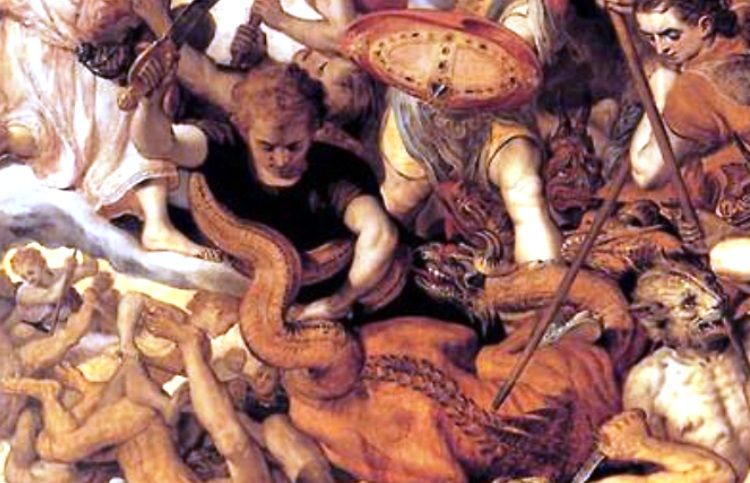Meg Belviso, Staff Editor of Angels on Earth, explains why heavenly messengers are so often depicted with wings.

This Nativity Scene Became a Christmas Miracle
A heaven-sent Autumn angel was an answered prayer from above.
Here’s why heavenly messengers are so often depicted with wings.
Meg Belviso, Staff Editor of Angels on Earth, explains why heavenly messengers are so often depicted with wings.

As anyone who reads Angels on Earth knows, angels come in all shapes and sizes. So why are they so often pictured with wings?
The Bible most often describes angels as appearing as humans. In early Christian art angels looked like majestic, but human, men. As seen in the above detail from the Catacomb of Priscilla fom Rome believed to be the oldest suviving icon of the Annunciation from the second century A.D.

It was during the rule of Emperor Constantine of Rome in the fourth century when heavenly angels first began to be depicted with wings, which represented strength, spirituality, speed and divine purpose. Wings symbolized the angels’ ability to pass between the physical world and the spiritual world. Above, the Annunciation on the triumphal arch of Santa Maria Maggiore in Rome.

Throughout the fourth century Christian artists were inspired by angels, eventually settling on the “classic” image still familiar to us today: beautiful, almost androgynous adult males fully clothed in a Roman tunic and mantle, with wings. Angel wings became more and more prominent throughout the next century, when the angels began to be painted as hovering above the earth rather than standing on it, as seen in the above fifth century mosaic of the Adoration of the Magi in Santa Maria Maggiore in Rome.

During the Renaissance, artists again began to be inspired by angels, portraying them not only as men but as youths and women. Angel wings became more elaborate and awe-inspiring, clearly showing the spiritual strength and purpose they were meant to convey. Above, The Annunciation of Angel Gabriel by Gaudenzio Ferrari.

Artists often used birds such as eagles and swans for models and painted the feathers in rainbow hues. The rainbow represented the bridge to heaven, one which angels crossed with their divine messages. As seen in Jan van Eyck’s depection of Archangel Gabriel above.

It was around that time that artists also sometimes turned their attention to depicting demons or fallen angels. These too had wings, usually black and pointed like a bat, as ugly and terrifying as their heavenly counterparts were magnificent. Above, The Fall of the Rebel Angels by Pieter Bruegel the Elder, painted in 1562.

In terms of physics, a human being weighing 200 pounds would need a wing span between 36 and 120 feet to fly, but angels are kept aloft by their purity of spirit. Their wings, like the angels themselves, get their power from God.

A heaven-sent Autumn angel was an answered prayer from above.

Her Holy Book was loved unconditionally–imperfections and all.

Their backyard became a comforting sanctuary for these bright faithful guardians from above.